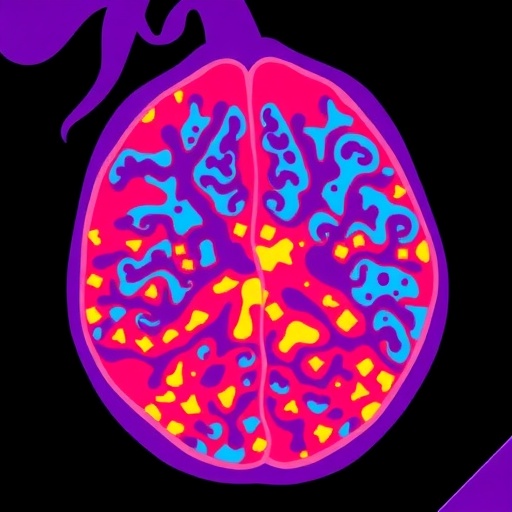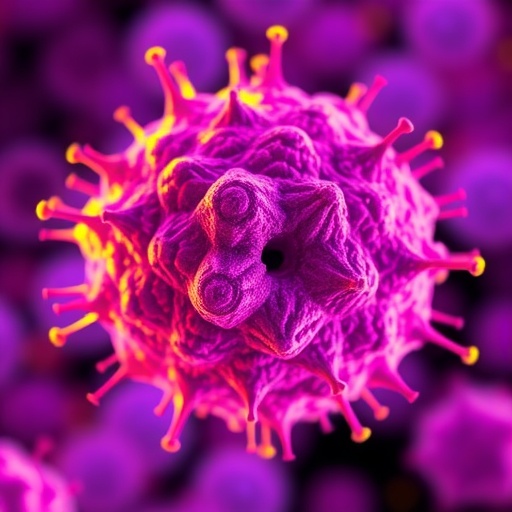In a groundbreaking advancement that could reshape the therapeutic landscape for advanced non-small cell lung cancer (NSCLC), researchers have identified baseline tumor burden as a powerful predictor for the effectiveness of first-line chemoimmunotherapy. The study, published in the prestigious journal BMC Cancer, elucidates a compelling link between the initial size of a patient’s tumor load and their subsequent response to treatment regimens combining chemotherapy with immune checkpoint inhibitors (ICIs). This revelation emerges from rigorous analyses conducted within two large, phase 3 randomized placebo-controlled trials, ORIENT-11 and ORIENT-12, providing robust validation for this promising biomarker.
For years, oncologists have grappled with predicting patient outcomes amid the complexity of lung cancer biology and the variable success of emerging immunotherapies. Immune checkpoint inhibitors, designed to unleash the body’s immune defenses against malignant cells, have transformed the standard of care for many with NSCLC, particularly when combined with cytotoxic chemotherapy. Yet, not all patients benefit equally, and a clear stratification system to identify likely responders has remained elusive. Traditional biomarkers, such as PD-L1 expression on tumor cells, have offered some guidance but lack comprehensive predictive power, especially when used in isolation.
The present study’s emphasis on tumor burden — quantified through meticulous radiographic assessment adhering to RECIST 1.1 criteria — represents a significant stride toward personalized oncology. Tumor burden here is defined as the sum of the longest diameters of all target lesions detected at baseline imaging before treatment initiation. Employing Cox proportional hazards modeling, the investigators dissected how this metric correlated with critical survival endpoints, including progression-free survival (PFS) and overall survival (OS), in patients receiving either chemoimmunotherapy or chemotherapy alone.
Among patients administered the combined chemoimmunotherapy, those with a low baseline tumor burden experienced markedly improved outcomes. Specifically, median progression-free survival extended to 11.60 months compared to 7.20 months in patients with high tumor burden—a statistically significant difference underscored by a hazard ratio of 0.625. This survival advantage was mirrored in overall survival, where low-burden patients lived a median of 28.77 months versus 20.10 months for their high-burden counterparts, reflecting a hazard ratio of 0.683. These findings reveal that tumor burden operates not merely as a passive characteristic of cancer but as an active determinant of treatment responsiveness.
Contrastingly, the chemotherapy-only cohort did not demonstrate any significant survival disparities based on tumor burden, accentuating the biomarker’s specificity and predictive value in the context of immunotherapy-enhanced regimens. This distinction elegantly underscores the interplay between tumor mass and the immune milieu modulated by checkpoint blockade, suggesting that high tumor burden may dampen immune activation or facilitate intrinsic resistance mechanisms that chemotherapy alone cannot overcome.
Multivariate analyses delved deeper, revealing that baseline tumor burden’s predictive capacity transcends tumoral PD-L1 expression levels. This dissociation from PD-L1 status holds profound clinical implications, proposing that tumor burden could serve as an independent stratification factor to refine patient selection beyond current biomarkers. Notably, patients harboring both high tumor burden and low PD-L1 expression exhibited the poorest prognosis and derived minimal benefit from adding immune checkpoint inhibitors to chemotherapy, with progression-free and overall survival rates inadequately improving compared to chemotherapy monotherapy.
This critical subset of patients—those with heavy tumor burden and low PD-L1—represents a clinical dilemma, highlighting an urgent need for alternative therapeutic strategies or intensified treatment modalities. Identifying such patients at baseline could spare them from unnecessary exposure to immunotherapy-related toxicities and guide enrollment in trials exploring novel agents or combination therapies to overcome resistance.
The validation of these findings in the ORIENT-12 trial cohort enhances confidence in tumor burden’s prognostic utility and broadens their generalizability. By confirming consistent patterns across independent patient populations, this research sets a new standard for incorporating radiographic tumor assessment into routine clinical decision-making for NSCLC.
Moreover, integrating tumor burden measurement with PD-L1 evaluation could enable a more nuanced, multi-dimensional risk stratification model. This dual-parameter approach promises to usher in a new era of precision oncology where clinicians tailor chemoimmunotherapy regimens based on comprehensive tumor profiling rather than relying on singular biomarkers or clinical judgment alone.
The methodological rigor of this post hoc analysis is noteworthy. Utilizing phase 3 randomized controlled trial data addresses the limitations of small cohort sizes and retrospective biases that have hindered prior investigations in this domain. The meticulous radiological quantification and advanced statistical modeling employed provide a high level of evidence, which is poised to influence clinical guidelines and treatment algorithms imminently.
Beyond its clinical ramifications, this research sparks intriguing biological questions regarding the mechanisms underpinning the observed relationship between tumor burden and immunotherapy efficacy. Hypotheses abound, ranging from the immunosuppressive tumor microenvironment fostered by large tumor masses to the logistical challenges in mounting effective anti-tumor immunity against extensive malignancies. Exploring these pathways may unveil new targets to potentiate immune responses even in patients with a high tumor burden, translating into broader applicability of immunotherapy.
Furthermore, this study underscores the importance of comprehensive baseline evaluation, urging oncologists to prioritize precise, repeatable measurements of tumor burden prior to therapy initiation. Such assessments demand collaboration between oncologists, radiologists, and pathologists, with an emphasis on standardization and interobserver reliability to integrate these metrics seamlessly into clinical practice.
The implications extend to drug development pipelines as well. Pharmaceutical trials incorporating tumor burden as a stratification factor can design more targeted studies, potentially accelerating the approval of novel immunotherapeutics tailored for specific patient subsets. It may also refine endpoints and subgroup analyses, enriching the interpretability of trial outcomes.
In an era marked by the burgeoning potential of personalized medicine, the confirmation of baseline tumor burden as a predictive biomarker is a beacon of progress. Not only does it refine prognostication for patients facing advanced NSCLC, but it also optimizes resource allocation, enhances therapeutic efficacy, and mitigates avoidable toxicities.
However, challenges remain in operationalizing tumor burden measurement widely. The time intensity of RECIST assessments, the heterogeneity in imaging modalities, and the dynamic nature of tumor evolution call for continuous innovation. Emerging technologies such as artificial intelligence-driven image analysis may soon facilitate rapid, accurate, and reproducible tumor burden quantification, democratizing this approach globally.
As researchers continue to unravel the complex biology of lung cancer and immunotherapy interactions, this study represents a pivotal step toward harnessing existing clinical parameters to maximize patient benefit. For millions facing the daunting diagnosis of advanced NSCLC, such advances kindle hope for more effective, personalized treatment journeys.
The road ahead will require multidisciplinary collaboration, technological enhancement, and regulatory acceptance of tumor burden as a key biomarker. Nonetheless, the evidence from these two landmark phase 3 trials positions baseline tumor burden assessment as an indispensable tool in the oncologist’s arsenal, promising improved survival outcomes and refined therapeutic strategies in the battle against lung cancer.
Subject of Research: Baseline tumor burden as a predictive biomarker for first-line chemoimmunotherapy efficacy in advanced non-small cell lung cancer.
Article Title: Baseline tumor burden predicts the efficacy of first-line chemoimmunotherapy in patients with advanced non-small cell lung cancer: results from 2 phase 3 randomized placebo-controlled trials
Article References:
He, X., Shi, M., Zhang, L. et al. Baseline tumor burden predicts the efficacy of first-line chemoimmunotherapy in patients with advanced non-small cell lung cancer: results from 2 phase 3 randomized placebo-controlled trials. BMC Cancer 25, 1380 (2025). https://doi.org/10.1186/s12885-025-14755-z
Image Credits: Scienmag.com
DOI: https://doi.org/10.1186/s12885-025-14755-z
Tags: baseline tumor size and treatment responsebiomarkers for cancer treatment responsechemoimmunotherapy effectivenesschemotherapy and immunotherapy combinationimmune checkpoint inhibitors in NSCLClung cancer immunotherapy advancementsnon-small cell lung cancer treatmentORIENT-11 and ORIENT-12 clinical trialspersonalized medicine in oncologypredicting patient outcomes in cancer therapystratification in cancer treatmenttumor burden in lung cancer





